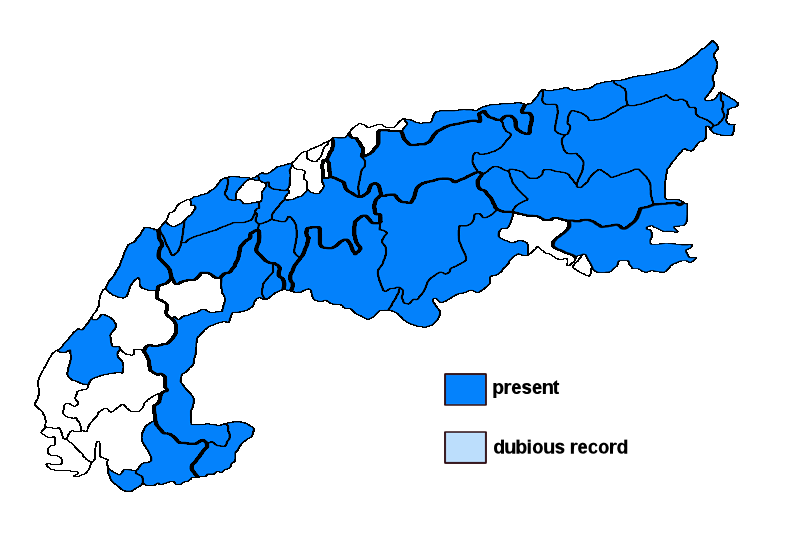Micarea denigrata (Fr.) Hedl.
Syn.: Biatora aniptiza (Stirt.) Walt. Watson, Biatora denigrata Fr., Biatorina praeviridans (Nyl.) Boistel, Biatorina sinothea auct., Catillaria denigrata (Fr.) Vain., Catillaria hemipoliella (Nyl.) Blomb. & Forssell, Catillaria praeviridans (Nyl.) Zahlbr., Catillaria spodiza (Nyl.) Zahlbr., Catillaria synothea auct. non Ach., Lecidea aniptiza Stirt., Lecidea denigrata (Fr.) Nyl., Lecidea discretula Nyl., Lecidea hemipoliella Nyl., Lecidea parissima Nyl., Lecidea praeviridans Nyl., Lecidea spodiza Nyl., Lecidea synothea auct., Micarea andesitica Vězda, Micarea hemipoliella (Nyl.) Vězda
Lichenised.
Substrate: lignum, bark
Altitudinal range: from the submediterranean/colline belt (potential vegetation: mixed deciduous forests dominated by Quercus and Carpinus) to the subalpine belt (potential vegetation: open, taiga-like forests dominated by Larix decidua and/or Pinus cembra and Rhododendron)
Note: a cool-temperate to circumboreal-montane, very polymorphic species, most common on wooden poles in the mountains, on fallen trunks and stumps of coniferous and broad-leaved trees, rarer on the bark of conifers; widespread throughout the Alps.
Austria: Vorarlberg; Tirol; Salzburg; Kärnten; Steiermark; Oberösterreich; Niederösterreich (incl. Wien); Burgenland; Germany: Oberbayern; Switzerland: Bern; Graubünden; Luzern; Schwyz; Ticino; Uri; Vaud; Valais; France: Alpes-Maritimes; Isère; Haute-Savoie; Var; Italy: Veneto; Trentino Alto Adige; Lombardia; Piemonte; Liguria; Slovenia: Alpine and Pre-Alpine Slovenia;





